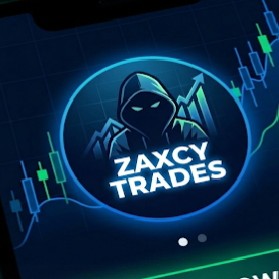
NEAR Protocol KursNEAR
NEAR/EUR Kursrechner
NEAR Protocol Marktinformationen
Live NEAR Protocol Kurs heute in EUR
Glauben Sie, dass der Kurs von NEAR Protocol heute steigen oder fallen wird?
Jetzt, da Sie den Preis von NEAR Protocol heute kennen, hier ist, was Sie sonst noch erkunden können:
Wie kauft man NEAR Protocol (NEAR)?Wie verkauft man NEAR Protocol (NEAR)?Was ist NEAR Protocol (NEAR)Was wäre passiert, wenn Sie NEAR Protocol (NEAR) gekauft hätten?Wie lautet die Preisprognose für NEAR Protocol (NEAR) in diesem Jahr, 2030 und 2050?Wo kann ich historische Preisdaten für NEAR Protocol (NEAR) herunterladen?Wie hoch sind die Preise ähnlicher Kryptowährungen heute?Möchten Sie Kryptowährungen sofort erhalten?
Kryptowährungen direkt mit einer Kreditkarte kaufen.Traden Sie verschiedene Kryptowährungen auf der Spot-Plattform für Arbitrage.NEAR Protocol Kursprognose
Wann ist ein guter Zeitpunkt, um NEAR zu kaufen? Sollte ich NEAR jetzt kaufen oder verkaufen?
Wie hoch wird der Kurs von NEAR in 2026 sein?
In 2026 wird auf der Grundlage einer prognostizierten jährlichen Wachstumsrate von +5 % erwartet, dass der Kurs von NEAR Protocol(NEAR) €1.47 erreichen wird; auf der Grundlage des für dieses Jahr prognostizierten Kurses wird die kumulative Kapitalrendite einer Investition in NEAR Protocol bis zum Ende von 2026 +5% erreichen. Weitere Informationen finden Sie unter NEAR Protocol Kursprognosen für 2025, 2026, 2030–2050.Wie hoch wird der Kurs von NEAR im Jahr 2030 sein?
Über NEAR Protocol (NEAR)
Was ist das NEAR-Protokoll?
NEAR Protocol ist eine dezentrale Plattform, die für die Erstellung und Ausführung von serverlosen Anwendungen und Smart Contracts zugeschnitten ist. Sie wurde 2017 von Alex Skidanov und Illia Polosukhin gegründet. Fundraising-Veranstaltungen von NEAR Protocol zogen Investoren wie Andreessen Horowitz, FTX Ventures und Pantera Capital an. Der offizielle Start im April 2020 markiert die Ankunft einer Plattform, die die Kluft zwischen den komplexen technischen Aspekten der Blockchain und den Endnutzern überbrücken soll. Im Gegensatz zu herkömmlichen Blockchain-Plattformen wird bei NEAR großer Wert auf Skalierbarkeit, Benutzerfreundlichkeit und Nachhaltigkeit gelegt. Diese drei Säulen haben die Design-Philosophie von NEAR geprägt und sorgen dafür, dass NEAR bei der Weiterentwicklung der digitalen Landschaft anpassungsfähig und widerstandsfähig bleibt.
Eines der wichtigsten Merkmale des NEAR-Protokolls ist seine entwicklerorientierte Umgebung. In Anerkennung der zentralen Rolle, die Entwickler im Blockchain-Ökosystem spielen, wurde NEAR so konzipiert, dass ihnen die erforderlichen Tools zur Verfügung stehen, ohne die für andere Blockchain-Systeme typischen Beschränkungen. Dies erleichtert die nahtlose Entwicklung dezentraler Anwendungen (DApps) und verbessert letztlich die Nutzererfahrung.
Darüber hinaus geht das Engagement des NEAR-Protokolls für die Dezentralisierung über reine Formalitäten hinaus. Die Plattform verfolgt einen Community-Orientierten Ansatz, bei dem Transparenz, offener Zugang und ein kollektiver Antrieb zur Verbesserung und Erweiterung des Ökosystems im Vordergrund stehen. Dieser Ethos stellt sicher, dass das Wachstum von NEAR nicht nur technologisch, sondern auch ganzheitlich ist und eine lebendige Community von Nutzern, Entwicklern und Interessengruppen fördert.
Ressourcen
Offizielle Website: https://near.org
Offizielle Dokumente: https://docs.near.org
NEAR Wiki: https://wiki.near. org
NEAR University: https://www.near.university
Wie funktioniert das NEAR-Protokoll?
Das NEAR-Protokoll ist eine Proof-of-Stake-Blockchain (PoS), die das Konzept des Sharding für die Datenverarbeitung integriert. Durch die Integration von PoS und Sharding kann das NEAR-Protokoll zwei wichtige Herausforderungen herkömmlicher Blockchains bewältigen: Energieeffizienz und Skalierbarkeit.
Der PoS-Konsensmechanismus unterscheidet sich von den energieintensiven Proof-of-Work (PoW)-Modellen. Anstatt sich bei der Validierung von Transaktionen auf die Rechenleistung zu verlassen, werden bei PoS Validierer eingesetzt, die eine bestimmte Menge an Tokens als Einsatz sperren. Diese Validierer werden auf der Grundlage der Menge an Tokens ausgewählt, die sie besitzen und bereit sind, diese als Sicherheiten zu hinterlegen. Dies gewährleistet einen energieeffizienteren und schnelleren Transaktions-Validierungsprozess.
Die Genialität von Sharding kommt ins Spiel, wenn man die Engpassprobleme anderer Blockchains bedenkt. Beim Sharding werden die Daten in Segmente, so genannte Shards, aufgeteilt, was eine gleichzeitige Verarbeitung von Transaktionen ermöglicht. Jeder Shard verarbeitet seine Transaktionen und Smart Contracts unabhängig. Auf diese Weise wird der Gesamtdurchsatz des Netzes massiv erhöht, was eine schnellere und effizientere Verarbeitung ermöglicht. Durch die Verschmelzung von PoS und Sharding erreicht das NEAR-Protokoll also eine außergewöhnliche Geschwindigkeit und Skalierbarkeit.
Über diese Kernfunktionen hinaus hat das NEAR-Protokoll erhebliche Anstrengungen unternommen, um ein nahtloses Zusammenspiel mit Ethereum, einer der führenden Blockchain-Plattformen der Branche, zu gewährleisten. In Anbetracht des ausgedehnten und etablierten Ethereum-Ökosystems hat NEAR zwei zentrale Lösungen eingeführt. Die erste ist die Rainbow Bridge, die als Vermittler zwischen NEAR und Ethereum fungiert und den mühelosen Transfer von Assets zwischen den beiden Chains ermöglicht. Dadurch wird sichergestellt, dass sich die Nutzer fließend zwischen beiden Ökosystemen bewegen können, ohne dass Dritte zwischengeschaltet werden müssen.
Die zweite Initiative ist Aurora, eine Layer-2-Lösung, die auf der Grundlage des NEAR-Protokolls entwickelt wurde. Aurora ist vollständig kompatibel mit Ethereum, so dass Ethereum-basierte dezentrale Anwendungen (dapps) nahtlos auf NEAR betrieben werden können. Dies bietet Dapps nicht nur eine Hochgeschwindigkeitsumgebung, sondern erweitert auch die Nutzbarkeit und Reichweite des NEAR-Protokolls auf die große Ethereum-Nutzerbasis.
Was ist der NEAR Token?
Der NEAR-Token ist die native Kryptowährung des NEAR-Protokolls. Da es sich bei dem Netzwerk um eine PoS-Blockchain handelt, wird NEAR benötigt, um eine Node zu werden. Sie dient mehreren Zwecken innerhalb des Ökosystems:
- Staking und Sicherheit: NEAR-Tokens werden von Validierern gestaket, die im Gegenzug die Möglichkeit erhalten, an der Blockproduktion und dem Konsensverfahren teilzunehmen. Dieser Staking Mechanismus gewährleistet die Sicherheit des Netzes und einen vertrauenswürdigen Betrieb.
- Transaktionsgebühren: Wie die meisten Blockchain-Netzwerke erhebt das NEAR-Protokoll Gebühren für die Transaktionsverarbeitung. Die Nutzer zahlen diese Gebühren mit dem NEAR-Token.
- Einsatz von Smart Contracts: Entwickler, die Smart Contracts auf dem NEAR-Protokoll einsetzen und ausführen, benötigen NEAR-Tokens, um die damit verbundenen Kosten zu decken.
Die Auswirkungen des NEAR-Protokolls auf die Finanzen
Mit dem Aufkommen dezentraler Finanzanwendungen (DeFi) erfährt die Finanzwelt einen rasanten Wandel. Das NEAR-Protokoll mit seinem Schwerpunkt auf Skalierbarkeit und Benutzerfreundlichkeit bietet einen fruchtbaren Boden für die Entwicklung und den Betrieb von DeFi-Plattformen. Die skalierbare Infrastruktur stellt sicher, dass Finanzanwendungen ein hohes Transaktionsvolumen bewältigen können - ein Muss für jede seriöse Finanzplattform.
Darüber hinaus bietet NEAR mit seiner effizienten Gebührenstruktur eine kostengünstige Alternative für Entwickler und Nutzer, die die traditionellen Finanzsysteme in puncto Schnelligkeit und Wirtschaftlichkeit herausfordert.
Was den Preis des NEAR-Protokolls bestimmt
Das NEAR-Protokoll, ein bedeutender Akteur im Blockchain-Bereich, hat mit seinem innovativen Ansatz zur Entwicklung dezentraler Anwendungen (dApps) hohe Wellen geschlagen. Der aktuelle Preis des NEAR-Protokolls wird von einer Vielzahl von Faktoren beeinflusst, darunter seine einzigartige Technologie und das lebendige Ökosystem, das es fördert. Als Layer-1-Blockchain zeichnet sie sich durch ihre Skalierbarkeit und ihre benutzerfreundlichen Funktionen aus, die für den aktuellen NEAR-Kryptopreis ausschlaggebend sind. Die Marktkapitalisierung des NEAR-Coins wird auch erheblich von seinem nativen Token, NEAR, beeinflusst, der für Transaktionsgebühren und Speicherung auf der Plattform verwendet wird, was heute einen dynamischen NEAR-Token-Preis fördert.
Eine Analyse des Preises des NEAR-Protokolls zeigt, dass das einzigartige Nightshade-Splittersystem eine entscheidende Rolle bei der Preisbestimmung spielt. Dieses System ermöglicht es der Blockchain, horizontal zu skalieren, die Transaktionsgeschwindigkeit zu erhöhen und die Kosten zu senken, was ein wichtiger Faktor für die NEAR-Kryptowährungspreisprognose für 2023 ist. Darüber hinaus macht der Fokus auf Nachhaltigkeit und Benutzerfreundlichkeit das NEAR-Protokoll zu einem vielversprechenden Projekt im Kryptobereich, was den NEAR-Protokoll-Coinpreis positiv beeinflussen könnte. Die Grafik, die die Preisentwicklung des NEAR-Protokolls zeigt, wird voraussichtlich auch von der Kompatibilität mit Ethereum durch die Aurora Layer 2 Skalierungslösung beeinflusst werden, die die Skalierbarkeit von NEAR mit der Reichweite von Ethereum kombiniert und eine lukrative Plattform für dApp-Entwickler bietet.
Außerdem werden die Prognosen für den Preis des NEAR-Protokolls durch seine robuste Tokenomik gestützt. Mit einem maximalen Angebot von 1 Milliarde NEAR-Tokens und einer aktuellen Marktkapitalisierung von mehr als 1 Milliarde US$ ab September 2023 ist das NEAR-Protokoll für ein beträchtliches Wachstum in den kommenden Jahren gerüstet. Live-Updates des NEAR Protocol-Kurses deuten darauf hin, dass das Unternehmen von den jüngsten Kapitalbeschaffungsrunden profitieren dürfte, die seine Finanzlage gestärkt haben und es ihm ermöglichen, mit den etablierten Akteuren auf dem Markt zu konkurrieren. Der aktuelle NEAR-Protokollpreis in USD liegt bei etwa 1,12 $, wobei Spekulationen auf eine mögliche Verdreifachung des Wertes innerhalb des nächsten Jahres hindeuten, was ihn zu einer attraktiven Investitionsmöglichkeit macht.
Bitget Insights



NEAR/EUR Kursrechner
NEAR Ressourcen
Tags:
Was können Sie mit Kryptowährungen wie NEAR Protocol (NEAR) tun?
Einfach einzahlen und schnell auszahlenKaufen, um zu wachsen, verkaufen, um Gewinn zu erzielenTraden Sie mit Spot für ArbitrageTraden Sie Futures für hohes Risiko und hohe RenditeVerdienen Sie passives Einkommen mit stabilen ZinssätzenÜbertragen Sie Assets mit Ihrer Web3-WalletWie kann ich NEAR Protocol kaufen?
Wie verkaufe ich NEAR Protocol?
Was ist NEAR Protocol und wie funktioniert NEAR Protocol?
Globale NEAR Protocol Kurse
Mehr kaufen
FAQ
Ist NEAR Protocol eine gute Investition?
Was bestimmt den Wert und den Preis vom NEAR Protocol?
Was sind die Vorteile des NEAR-Protokolls?
Ist das NEAR-Protokoll eine Layer-1-Lösung?
Was ist einzigartig am NEAR-Protokoll?
Wozu dient das NEAR-Protokoll?
Wie hoch ist der aktuelle Preis des NEAR Protocol?
Welche Faktoren beeinflussen den Preis des NEAR Protocol?
Wird der Preis des NEAR Protocol in Zukunft steigen?
Wie kann ich NEAR Protocol kaufen?
Wie lautet die Preisschätzung für NEAR Protocol?
Wie vergleicht sich der Preis des NEAR Protocol mit anderen Kryptowährungen?
Was ist die Marktkapitalisierung von NEAR Protocol?
Gibt es bevorstehende Ereignisse, die den Preis des NEAR Protocol beeinflussen könnten?
Wo kann ich historische Preisdaten für NEAR Protocol finden?
Ist das NEAR-Protokoll derzeit eine gute Investition?
Was ist der aktuelle Kurs von NEAR Protocol?
Wie hoch ist das 24-Stunden-Trading-Volumen von NEAR Protocol?
Was ist das Allzeithoch von NEAR Protocol?
Kann ich NEAR Protocol auf Bitget kaufen?
Kann ich mit Investitionen in NEAR Protocol ein regelmäßiges Einkommen erzielen?
Wo kann ich NEAR Protocol mit der niedrigsten Gebühr kaufen?
Kurse ähnlicher Kryptowährungen
Kurse neu gelisteter Coins auf Bitget
Trendige Aktionen
Wo kann ich NEAR Protocol (NEAR) kaufen?
Videobereich - schnelle Verifizierung, schnelles Trading









